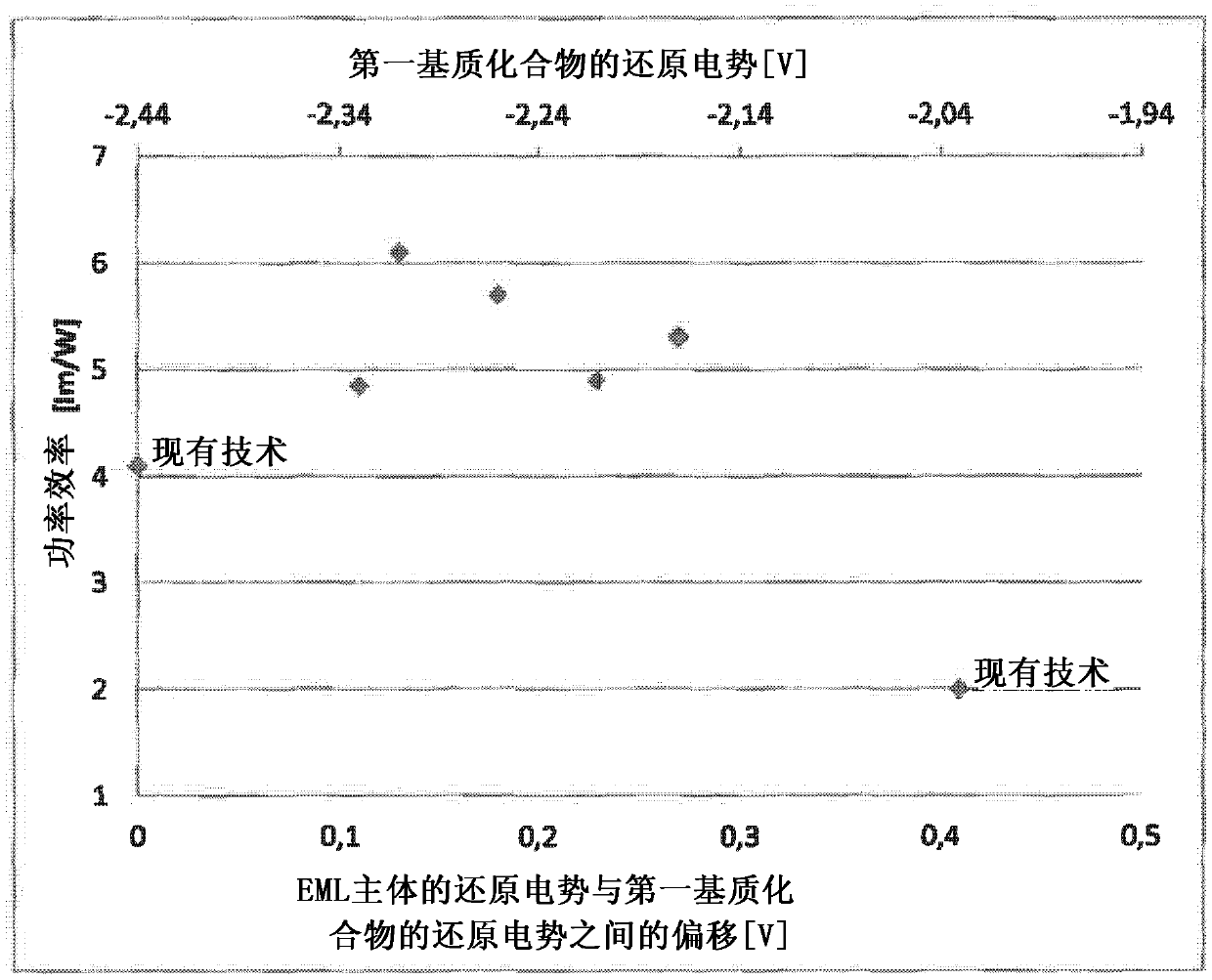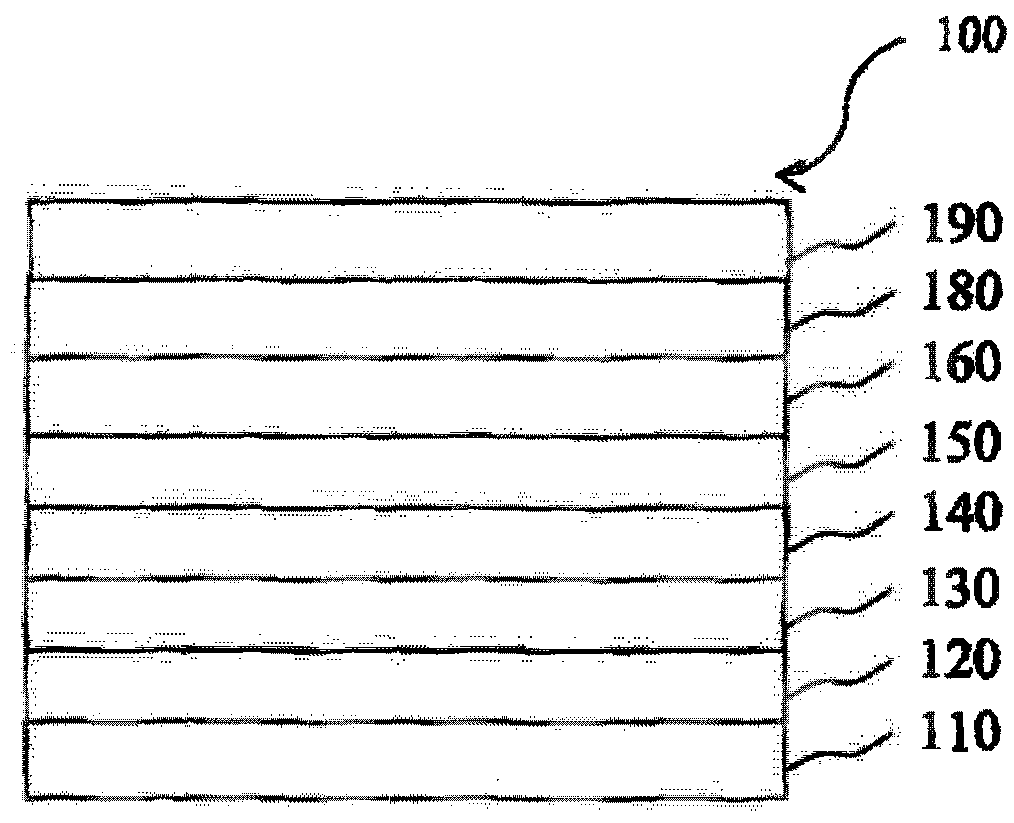Organic electroluminescent device
An electroluminescence device and luminescence technology, which are applied in the fields of organic light-emitting devices, organic light-emitting device parameters, organic semiconductor devices, etc., and can solve the problems that the power efficiency of organic electroluminescent devices needs to be improved.
- Summary
- Abstract
- Description
- Claims
- Application Information
AI Technical Summary
Problems solved by technology
Method used
Image
Examples
Embodiment
[0347] Various dipole moments and reduction potentials of representative examples of the first host compound were measured below. The results are given in Table 4 below.
[0348] Table 4: Dipole moments and reduction potentials of representative examples of first host compounds
[0349]
[0350]
[0351]
[0352] Various dipole moments for representative examples of second host compounds are calculated below. The results are given in Table 5 below.
[0353] Table 5: Dipole moments of representative examples of second host compounds
[0354]
[0355] *) The two conformers have a total energy difference of 1 kJ / mol. Therefore, two conformers exist at room temperature.
[0356] synthesis program
[0357] Synthesis of Compound ETM-3 ([1,1':4',1"-terphenyl]-3-ylbis(2-methylnaphthalen-1-yl)borane)
[0358]
[0359] 1. Tetrakis(3-bromophenyl)stannane stage 1
[0360] Sn(m-C 6 h 4 Br) 4 : 1,3-Dibromobenzene (5.89 g, 24.97 mmol) was dissolved in 60 mL of e...
PUM
 Login to View More
Login to View More Abstract
Description
Claims
Application Information
 Login to View More
Login to View More - R&D
- Intellectual Property
- Life Sciences
- Materials
- Tech Scout
- Unparalleled Data Quality
- Higher Quality Content
- 60% Fewer Hallucinations
Browse by: Latest US Patents, China's latest patents, Technical Efficacy Thesaurus, Application Domain, Technology Topic, Popular Technical Reports.
© 2025 PatSnap. All rights reserved.Legal|Privacy policy|Modern Slavery Act Transparency Statement|Sitemap|About US| Contact US: help@patsnap.com



